BUA (부아)
8.3Km 2021-03-19
9, Bogwang-ro 59-gil, Yongsan-gu, Seoul
+82-2-792-3340
A restaurant frequently featured in programs on Korean delicious dishes. Bua, meaning a lotus in Thai, features authentic Thai cuisine. The best menu at this restaurant is som tam. This is a Asian restaurant located in Itaewon, Seoul.
Hamilton Hotel (해밀톤 호텔)
8.3Km 2021-03-09
179, Itaewon-ro, Yongsan-gu, Seoul
+82-2-3786-6000
Opened in 1973 with the goal of being a representative hotel of Korea, Hamilton Hotel is a landmark in Seoul's Itaewon. The hotel is easily accessable via public transportation, including the subway and airport limousine buses. It is also in a central area of the city, allowing guests to easily travel to all the tourist attractions in Seoul or attend to any business they may have here. Hotel amenities include an outdoor swimming pool, banquet halls, fitness center, sauna and more, making Hamilton Hotel popular for relaxation.
La Cucina (라 쿠치나)
8.3Km 2019-08-01
10, Hoenamu-ro 44ga-gil, Yongsan-gu, Seoul
+82-2-794-6005
La Cucina, located across from the main gate of the Grand Hyatt Seoul, is an Italian restaurant that opened in 1990. The kitchen of the restaurant is divided into five different sections each offering its own carefully selected cuisine. The main menu includes lobster spaghetti, Mediterranean seafood spaghetti and grilled lamb.
The restaurant offers over 700 bottles of wine from its cellar located in the basement of the restaurant. An in-house sommelier will assist you in choosing the best wine. At night, you may enjoy a fantastic view of the Namsan Seoul Tower while dining out on the terrace.
Jongjeom Tteokbokki (종점 떡볶이)
8.3Km 2020-04-09
217-1, Dasan-ro, Jung-gu, Seoul
+82-2-2234-3649
Jongjeom Tteokbokki opened in 1978 and has been a popular restaurant on Sindang-dong Tteokbokki Street since then. The restauant serves a special meal option of adding fried rice to tteokbokki.
Urijip Tteokbokki (우리집떡볶이)
8.3Km 2020-04-09
217-1, Dasan-ro, Jung-gu, Seoul
+82-2-2232-4531
Opened in 1979, Urijip Tteokbokki has operated for over 30 years in the same location. This restaurant has a spacious basement area which can accommodate up to 100 people. The restaurant is especially popular among Japanese tourists.
GOO STK733 (GOO STK 733)
8.3Km 2021-03-26
101, Itaewon-ro 27-gil, Yongsan-gu, Seoul
+82-2-794-7339
It is the first steak house in Korea. This restaurant's signature menu is steak. This Western dishes restaurant is located in Yongsan-gu, Seoul.
Jardin botanique de Namsan (남산 야외식물원)
8.3Km 2022-12-16
323, Sowol-ro, Yongsan-gu, Seoul
+82-2-798-3771
Ce jardin inauguré le 18 février 1997 a été bâti sur le site du quartier résidentiel étranger de Hannam-dong à Yongsan-gu, démoli en 1994. Le jardin possède une surface de 59 241 m² où poussent 117 132 végétaux de 269 espèces différentes organisés en 13 espaces thématiques. On compte parmi eux 60 912 pins de 129 sortes, et 56 220 anémones sauvages de 140 sortes.
Grand Magasin Lotte (Cheongnyangni) (롯데백화점-청량리점)
8.3Km 2016-04-01
205, Wangsan-ro, Dongdaemun-gu, Seoul-si
+82-2-3707-2500
Le Grand Magasin Lotte de Cheongnyangni possède une culture du shooping depuis sa création en 1994 au niveau de la station Cheongnyangni sur la ligne 1 du métro séoulien et a participé au redéveloppement du quartier depuis.
Il est ouvert de 10h30 à 20h00, plus tard les vendredis, samedis, et dimanches et est fermé un lundi par mois.
Mabongrim Wonjo Halmeonijip Tteokbokki (마복림원조할머니집떡볶이)
8.3Km 2021-03-29
5, Dasan-ro 35-gil, Jung-gu, Seoul
+82-2-2232-8930
Opened in 1953 by a woman known as Mabongnim, the restaurant takes pride in its 50-plus years of service. As Mabongnim gained popularity, other similar establishments opened nearby, and eventually, formed the now famous “Tteokbokki Street.” The elderly proprietor is well known, even starring in a red-pepper paste (gochujang) ad in the 1990's.
The secret of this restaurant’s tteokbokki lies in the fact that red pepper
paste is mixed with Chinese soybean paste for a sweet and spicy taste, but has now been adopted by other Sindang-dong restaurants. Nevertheless, there is something special about this restaurant’s fare. At present, Mabongnim’s daughters-in-law are running the restaurant.
Gare de Cheongnyangni (청량리역)
8.3Km 2016-12-12
214 Wangsan-ro, Dongdaemun-gu, Séoul
Cette gare fut construite en 1911 en tant que gare ordinaire. Elle prit le nom de Donggyeongseong en 1938 puis Cheongnyangni en 1942. Elle fut détruite lors de la Guerre de Corée en 1950 puis reconstruite en 1959.
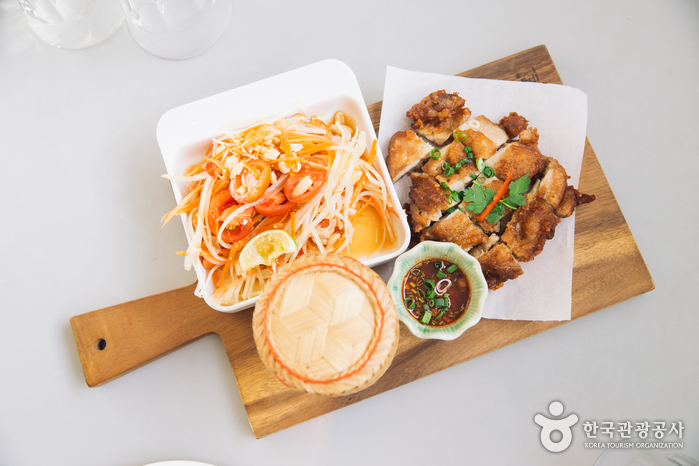
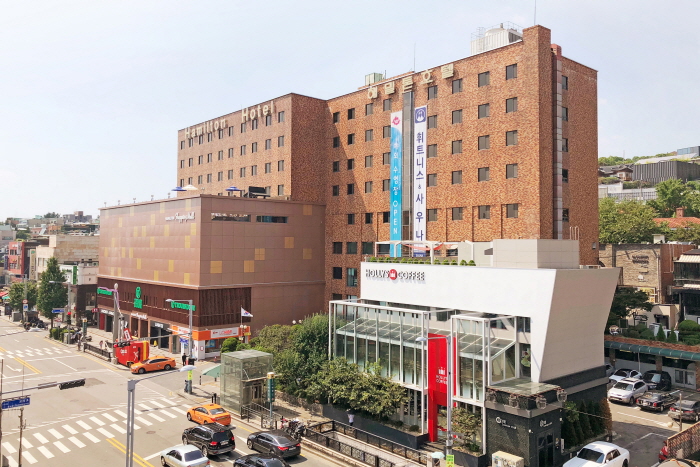
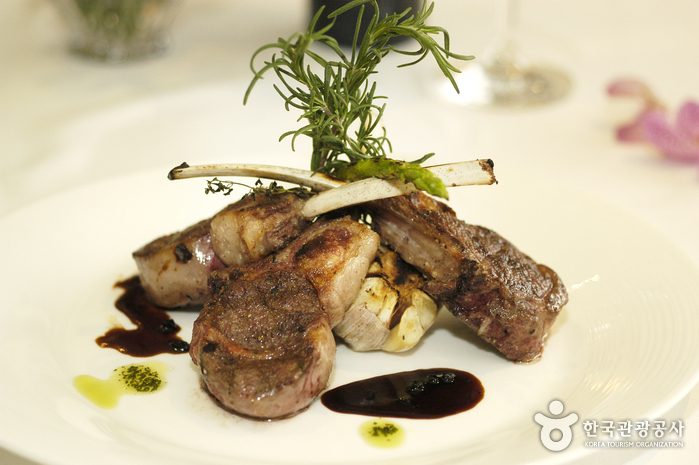
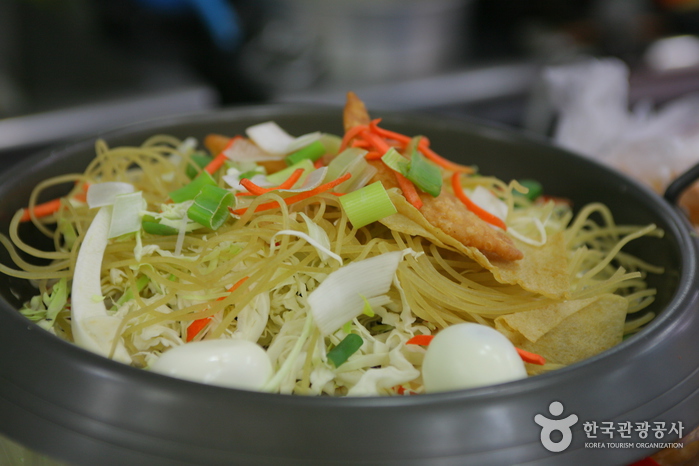

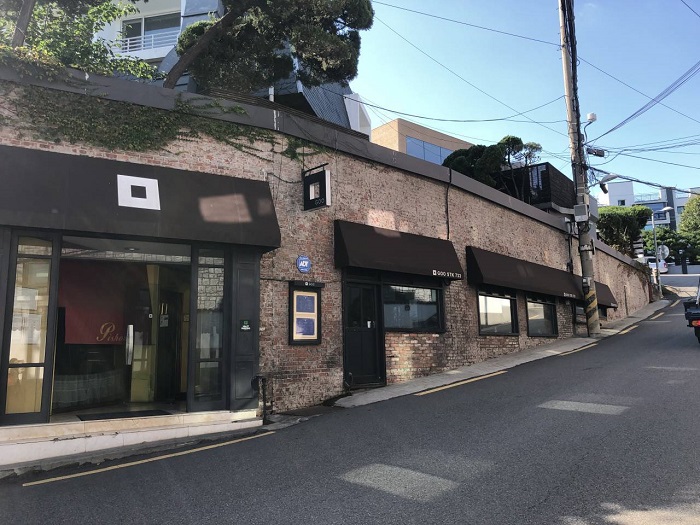

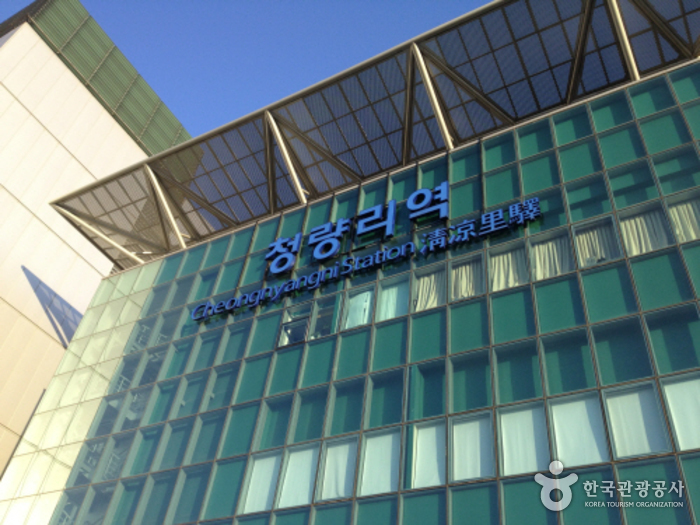
 Français
Français
 한국어
한국어 English
English 日本語
日本語 中文(简体)
中文(简体) Deutsch
Deutsch Español
Español Русский
Русский